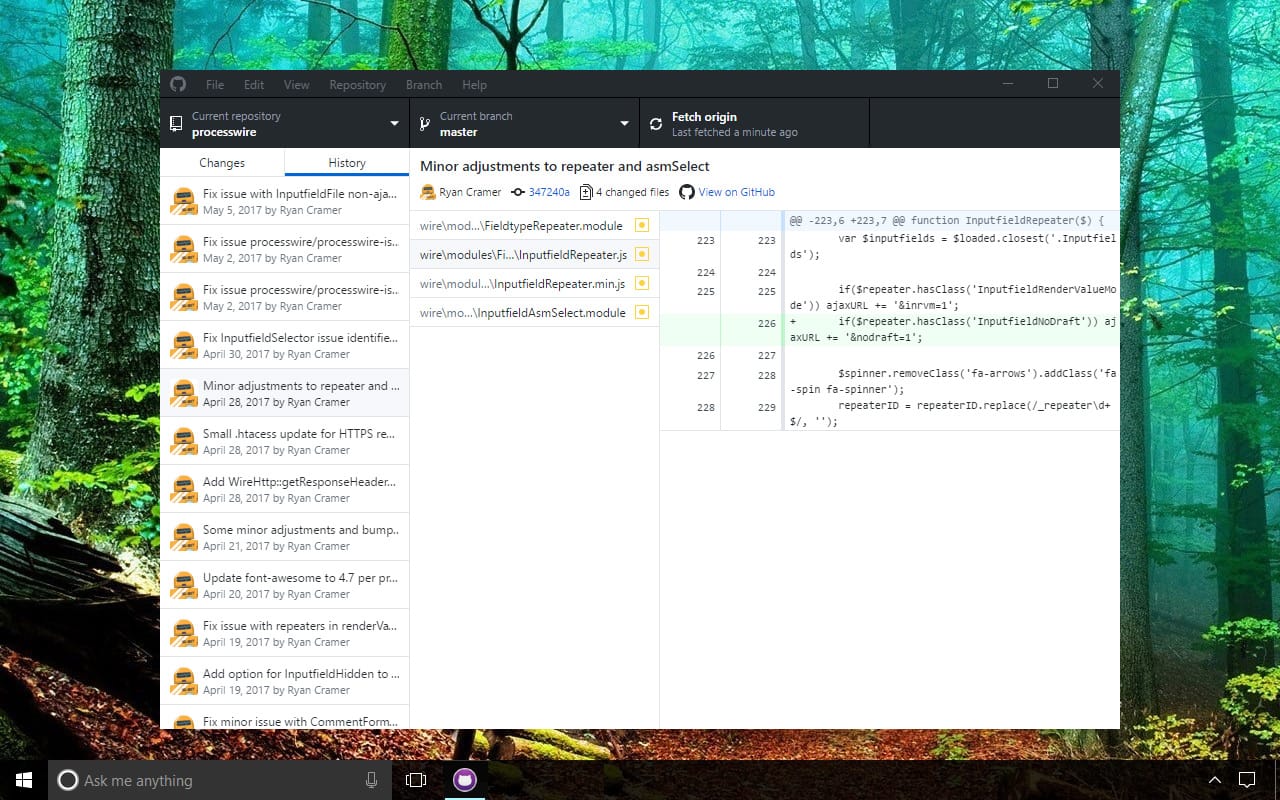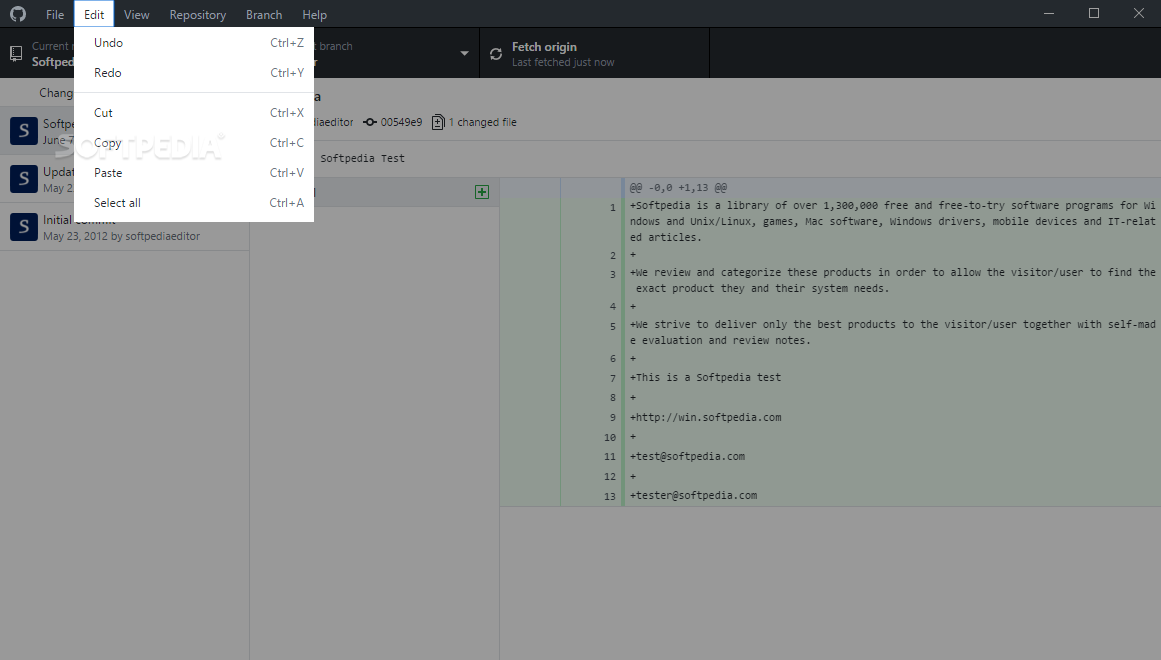

- #Github desktop powershell how to#
- #Github desktop powershell install#
- #Github desktop powershell download#
- #Github desktop powershell free#
There is also a free online training module at. They represent a complete re-write of this effort, and are easier for IT Pros to use, and supports both passive and silent installations.
#Github desktop powershell download#
The new PassiveInstall PowerShell modules are free for download at. It was usefull, but without sufficient interest it has now been replaced by a non-open source PowerShell packaged called "PassiveInstall". Please see the Wiki on the github project ( ) for more information about the project. A sample PowerShell script is also included in the project to provide a shell that may be copied and modified as needed on a per-application basis. A PowerShell script that uses this framework would be an ideal way for the IT Administrator to describe the installation and customization steps.Ī PowerShell module would contain the common functions and data structures that would be used. This would allow an IT Administrator to automate the preparataion of these applications, typically as part of a larger system for desktop image building and instantiation.įor example, the Microsoft AutoSequencer (from the ADK) is a system that automates creation of virtual applciation packages for dynamic delivery using a virtual machine for the process of capturing and packaging up the appliction.
#Github desktop powershell install#
We wish to have a PowerShell based framework that may be used to easily install and configure a desktop software application. C:PS> Subvert-PE -Path C:PathToPE.exe Same as above but continue to inject shellcode and overwrite the binary. That's because it has syntax highlighting for everything – making it easier to work with Git.A PowerShell framework for desktop application installations. FuzzySecurity: Powershell PE Injection, this is not the Calc you are looking for Analyse the PE header and hexdump the region of memory where shellcode would be injected. By the end of this guide, you'll have used GitHub Desktop to create a repository, make changes to the repository, and publish the changes to GitHub. So, running the git branch -d command would only remove the branch locally.Īnd if you have issues working with Git, I suggest you switch your terminal to Git bash. GitHub Desktop extends and simplifies your workflow, using a visual interface instead of text commands on the command line. That’s because you’ve pushed the branch already. To associate your repository with the powershell-desktop topic, visit your repos landing page and select 'manage topics. If you check GitHub again, it won’t be there:īear in mind that to completely remove a Git branch from your project, you need to use the git push origin command. More than 94 million people use GitHub to discover, fork, and contribute to over 330 million projects. You can see the remote branch, test-branch1, is not listed anymore. To verify that the remote branch has been deleted, run git branch -a again. So the syntax representing the command for removing a remote branch looks like this: git push origin -d branch-name.įor instance, to remove the test-branch1 branch, I will run git push origin –d test-branch1: To completely remove a remote branch, you need to use the git push origin command with a -d flag, then specify the name of the remote branch. But if you run git branch -a, the branch will still be listed.Īnd if you check GitHub, the branch will still be there:

If you try to delete a remote branch with the same command used for deleting a local branch, you will get a message that the branch has been deleted. If you type in the command correctly, you will get a response that the branch has been deleted. To delete a local branch, run git branch -d branch-name. In this situation, test-branch2 is a branch I’m yet to push, so it’s a local branch. This is a feature I've seen only in Git bash. If you run git branch -a in particular, it will make the remote branches distinct. Run git branch or git branch -a to see the branches you’ve created for your project. But it's okay if you use another terminal. I’ll use Git bash in this article because it makes working with Git easier than any other terminal.
#Github desktop powershell how to#
But firstly, let’s look at how to delete a local branch.

In this article, I will show you how to delete a remote branch in Git. The Form was created using Sapien Powershell Studio 2012. I hope this help you in your day to day tasks. This utility is very helpful for anyone managing workstations or servers. When you're working with Git, you might want to delete remote branches pushed to a platform like GitHub for various reasons. LazyWinAdmin is a project released in 2012, a PowerShell Script that generates a GUI/WinForms loaded with tons of functions.


 0 kommentar(er)
0 kommentar(er)
